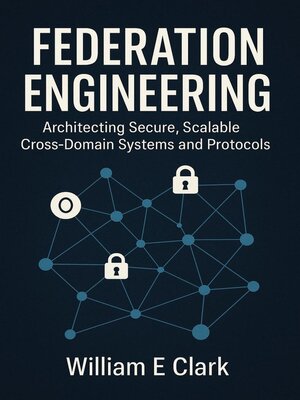Federation Engineering
ebook ∣ Architecting Secure, Scalable Cross-Domain Systems and Protocols
By William E. Clark

Sign up to save your library
With an OverDrive account, you can save your favorite libraries for at-a-glance information about availability. Find out more about OverDrive accounts.
Find this title in Libby, the library reading app by OverDrive.



Search for a digital library with this title
Title found at these libraries:
| Library Name | Distance |
|---|---|
| Loading... |
This authoritative guide reframes federation as an engineering discipline, offering a rigorous foundation for designing secure, scalable cross-domain systems and protocols. It begins by clarifying core concepts and taxonomies—distinguishing federation from integration and collaboration—and systematically analyzes models of autonomy, heterogeneity, and trust. Readers are introduced to the essential properties and persistent challenges of federated systems, including scalability, interoperability, and trust management, all illuminated by historical and contemporary case studies that show how federation drives the evolution of distributed computing.
Moving from theory to practice, the book delivers concrete, implementation-focused guidance for building federated environments. It provides in-depth treatments of federated identity and access control—covering SAML, OAuth, and OpenID Connect—and practical patterns for cross-domain authentication, authorization, and single sign-on. It also addresses federated data access and semantic translation, presenting techniques for distributed query processing, conflict resolution, and privacy-preserving data sharing in regulated contexts, alongside strategies for managing resources and policy across multi-cloud, hybrid, and microservices architectures.
The final section probes advanced and emergent topics that every engineer must master: federated machine learning and defenses against model- and data-targeted attacks; governance, security, and compliance frameworks for multi-stakeholder systems; and novel architectures such as decentralized federation leveraging blockchain. The book concludes with forward-looking guidance on automation using AI and on designing quantum-resistant protocols, equipping practitioners and researchers with the principles, patterns, and tools needed to architect robust federated systems for the future.







